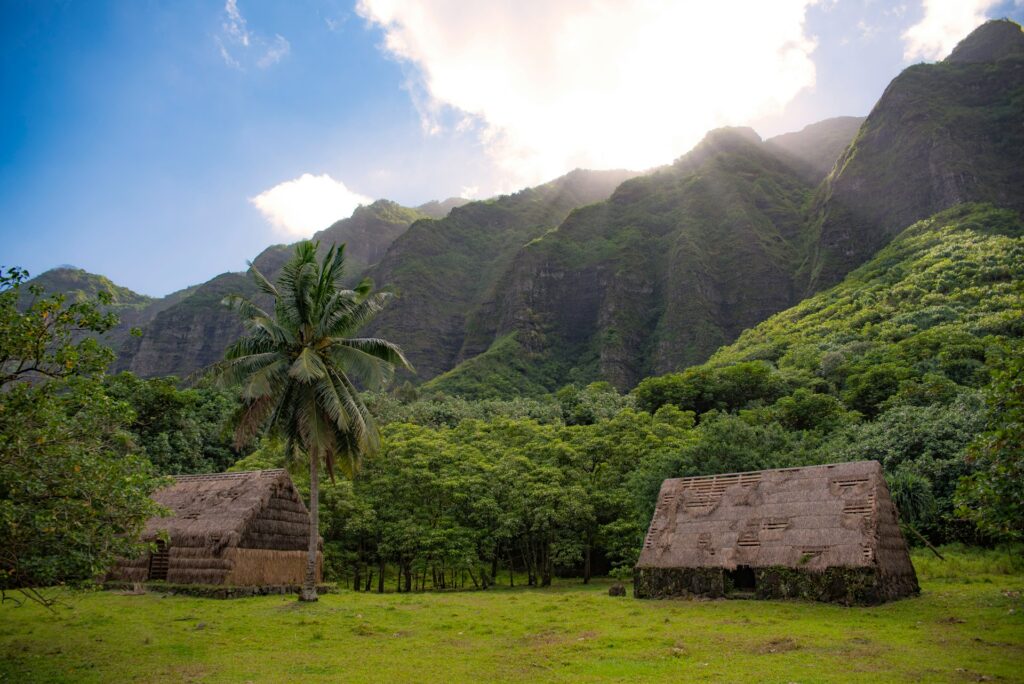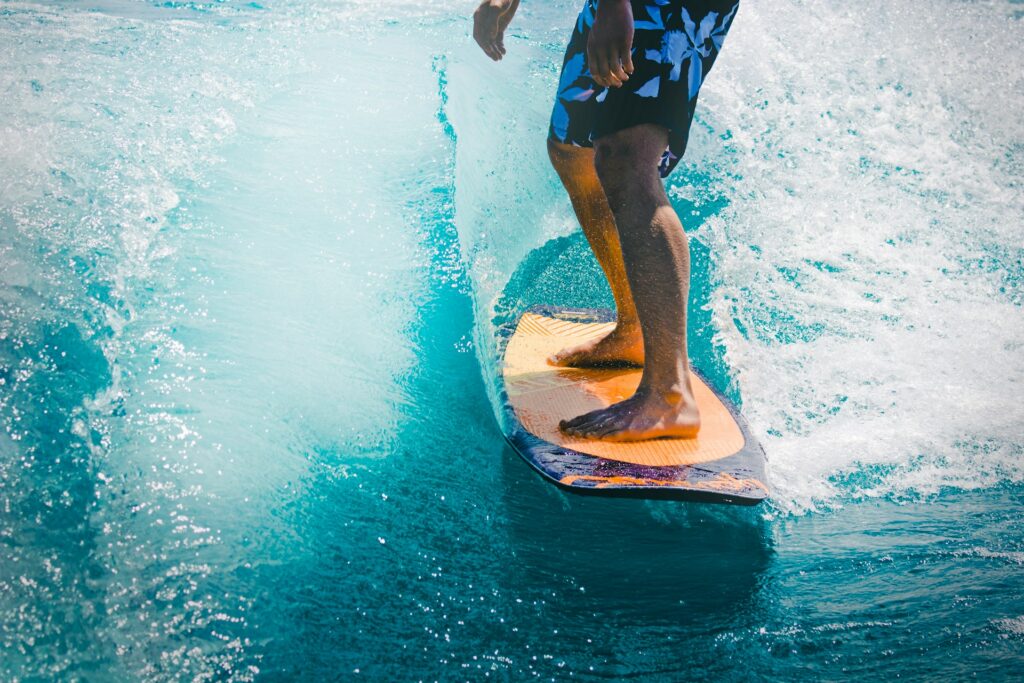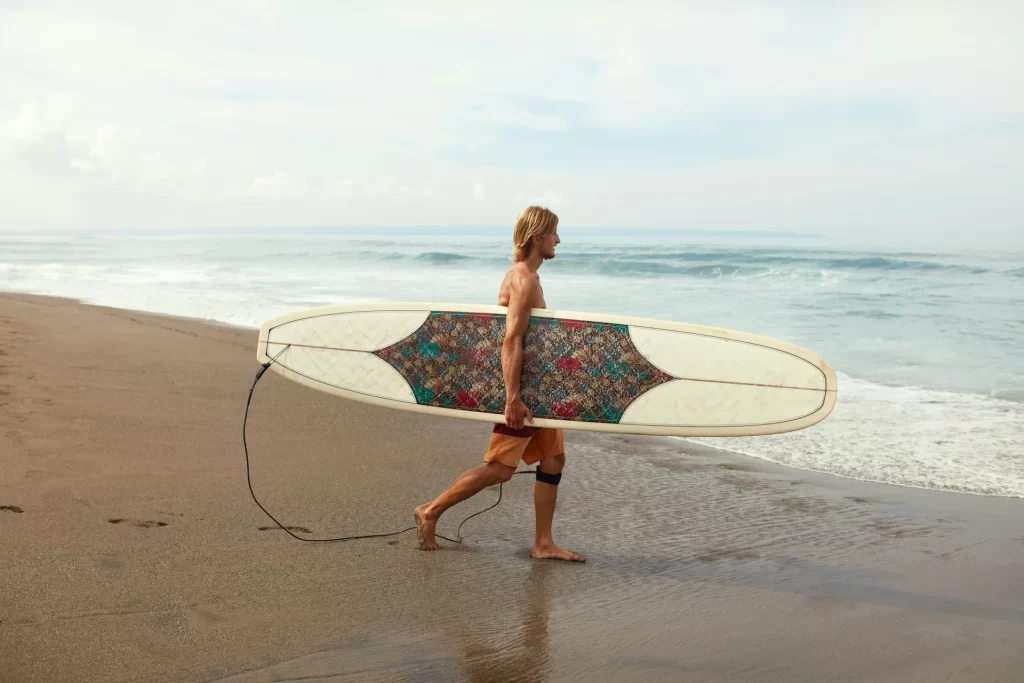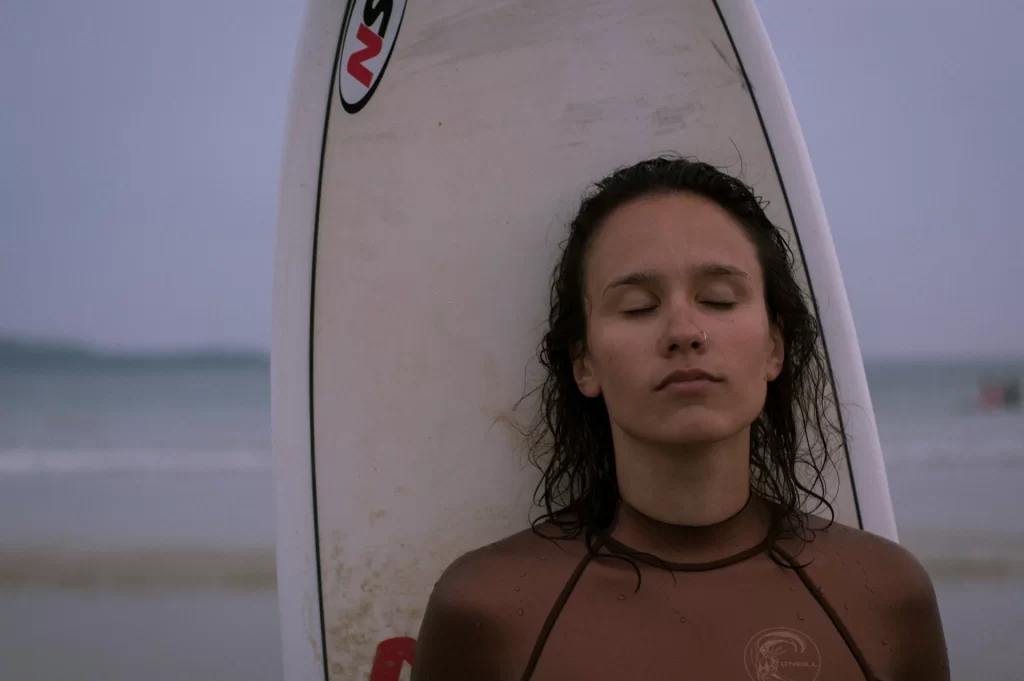
We might be "gone surfing,” but you can always find us right here!

Navigating the world of surfboard types can be tricky, but don’t worry. Our team at Gone Surfing Hawaii is here to help!
We know that choosing the right surfboard design and type can be a bit overwhelming, especially with so many different shapes and sizes out there. Whether you’re just starting out or you’re a pro surfer looking to add to your collection, we’ve got you covered. Let’s explore the world of surfboards and find the perfect one for you!

Understanding the history of surfboards and surfboard types is essential for any surfer, as it provides insights into the evolution of surfboard design and the culture of surfing. Knowing when different surfboard types were invented and who invented the surfboard can deepen your appreciation for the sport and the craftsmanship that goes into each board. It can also help you make informed decisions when choosing from various surfboard types.
While the exact timeline of the original surf board invention remains uncertain, they were pioneered by the ancient Polynesians. Crafted from solid wood, the first surfboard was heavy and lengthy, often spanning from 10 to 20 feet and weighing up to 200 pounds.
George Freeth‘s innovative move of sawing traditional solid wood boards in half birthed shorter, more agile boards, a departure from the hefty original surfboard types. Tom Blake’s pivotal introduction of the hollow surfboard in 1926 marked a turning point.
These hollow boards, made from wooden frameworks covered with marine plywood, were lighter and more maneuverable than their solid predecessors. Blake further revolutionized surfing with the invention of the surfboard fin in 1935, dramatically enhancing board control and stability.
The history of the surfboard’s invention is deeply intertwined with the cultural practices of ancient Polynesia. While specific individuals cannot be definitively credited with its invention, the ancient Polynesians are widely recognized for the creation. The first surfboard types were not just tools for recreation but integral parts of Hawaiian culture and society.

In ancient Hawaii, surfing was more than just a fun activity; it was a cultural sport with deep spiritual meaning. Chiefs and commoners alike enjoyed surfing, which was a symbol of social status and a way to connect with the gods.
The first surfboards were made from Hawaiian wood, specifically from koa or wiliwili trees. Unlike the modern lightweight fiberglass surf board, these wooden boards were heavy and difficult to maneuver. Koa wood, in particular, was prized for its strength and durability, making it ideal for crafting surfboards that could withstand the rigors of the ocean.

Longboards are the classic surfboards, typically ranging from 8 to 11 feet in length. They offer great stability and are perfect for beginners learning to catch waves. Longboards are known for their smooth, easy rides and are ideal for smaller, slower waves. They allow for a more relaxed and traditional surfing style, emphasizing style and grace over high-performance maneuvers.

Shortboards are designed for more experienced surfers who are looking for speed, maneuverability, and the ability to perform advanced tricks and maneuvers. They are typically between 5 and 7 feet long and have a pointed nose and a narrow, sharp tail, which allows them to make quick turns on the face of the wave.
Shortboards are best suited for more powerful, steeper waves and require a higher skill level to ride effectively. They are common on North Shore beaches in winter.
Fish surfboards are shorter and wider than traditional shortboards, typically ranging from 5 to 7 feet in length. They are designed to be fast and maneuverable in small to medium-sized waves.
Check out the best times of the year and day to catch the perfect wave for your surfing goal & surfboard type.
Fish boards are characterized by their swallowtail design, which provides added lift and speed. They are great for generating speed in slower waves and are popular among surfers looking for a fun, playful ride.
Funboards, also known as mini-mals or hybrid boards, are surfboard types that combine the stability of a longboard with the maneuverability of a shortboard. They are typically between 7 and 8 feet long and are suitable for surfers of all skill levels.
Funboards offer a balance between stability and agility. It makes them a great choice for surfers looking to progress beyond a longboard but not quite ready for a shortboard.
Guns are long, narrow surfboards designed for riding big waves. They are typically longer than 8 feet and have a pointed nose and a narrow tail, allowing them to handle large waves’ speed and power. Gun surfboard types are used by experienced big-wave surfers who want to challenge themselves in some of the most demanding surf conditions.
SUPs are oversized surfboards that are designed to be used with a paddle while standing up. They are typically longer and wider than traditional surfboards, ranging from 9 to 12 feet long.
SUPs are great for cruising on flat water, catching small waves, and even practicing yoga or fishing. They offer a full-body workout and are a popular choice for recreational paddlers and fitness enthusiasts.

Surfboards have evolved significantly in terms of materials used for construction. Traditionally, surfboards were crafted from solid wood, such as koa or wiliwili trees, making them heavy and challenging to maneuver. However, modern surfboards are predominantly made from lighter materials like foam, fiberglass, and epoxy, offering improved performance and durability.
Foam boards are constructed from a lightweight foam core, typically made of expanded polystyrene (EPS) or polyurethane (PU) foam. They are then covered with layers of fiberglass and resin to create a sturdy shell. Foam boards are buoyant and easier to paddle, making them ideal for beginners.
Fiberglass surfboards are constructed with a foam core that is wrapped in fiberglass cloth and coated with polyester or epoxy resin. These boards are known for their strength and responsiveness, offering a good balance of performance and durability.
Epoxy surfboards are similar to fiberglass surf boards but use epoxy resin instead of polyester resin. Epoxy boards are lighter, more buoyant, and more durable than traditional fiberglass boards, making them popular among surfers looking for a high-performance board.
Some surfboards use alternative materials like carbon fiber or bamboo to enhance performance and durability. Carbon fiber adds stiffness and strength to the board, making it more responsive in larger waves. Bamboo, on the other hand, is used for its natural flex and eco-friendly properties.
While wooden surfboards may not be as lightweight or high-performance as their foam and fiberglass surfboard types, they are cherished for their craftsmanship and connection to surfing’s rich history. Surfing a wooden board is a unique experience that connects surfers to the sport’s roots, making them a timeless classic in the surfing world.

When picking a surfboard, consider your skill level, the kind of waves you’ll be riding, and your goals. Beginners should choose a longboard or funboard for more stability, while experienced surfers might choose a shortboard or fish for more agility. The fin setup on your board, like a single fin or thruster, also plays a big role in your board’s performance.
Before you buy a board, why not try out different surfboard types through rentals? This way, you can test out various boards and see what works best for you without breaking the bank.
At Gone Surfing Hawaii, we offer a wide range of surfboard rentals in Waikiki, from longboards to high-performance shortboards. Our rental rates are affordable, and our location provides easy access to various waves suitable for all skill levels. Whether you’re a beginner or an experienced surfer, we have the right board for you.
© 2014 Gone Surfing Hawaii. All Rights Reserved. // CALL 8 0 8 . 4 2 9 . 6 4 0 4 // TEXT 808.207.8810 info@gonesurfinghawaii.com